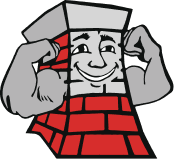Homeowner Checklist: Preparing for Winter – Part 1
 With the changing of the seasons comes a variety of challenges especially during the winter. Many pleasant possibilities come along with the fall and winter seasons, such as family time at Thanksgiving, the joys of Christmas, and enjoying your favorite beverage by a warm fire. The more prepared you are, the more smoothly things will go; and thinking ahead will most likely save you money on potential repair costs. We realize that there are many other things to consider in addition to getting your fireplace and chimney ready; so we put together the following winter checklist for homeowners.
With the changing of the seasons comes a variety of challenges especially during the winter. Many pleasant possibilities come along with the fall and winter seasons, such as family time at Thanksgiving, the joys of Christmas, and enjoying your favorite beverage by a warm fire. The more prepared you are, the more smoothly things will go; and thinking ahead will most likely save you money on potential repair costs. We realize that there are many other things to consider in addition to getting your fireplace and chimney ready; so we put together the following winter checklist for homeowners.
□ Check Carbon Monoxide Detectors and Smoke Alarms
Make safety your first step in preparing for winter. Safety experts recommend that you put fresh batteries in your smoke alarms and carbon monoxide detectors every six months. Place alarms and detectors on every level of your home and near each bedroom. These safety devices should NOT be placed within 15 feet of fireplaces, furnaces, or gas appliances because when they are first turned on, they release small amounts of carbon monoxide and would frequently trigger false alarms. Replace smoke alarms and carbon monoxide detectors every five to ten years.
□ Seal Windows and Doors
When considering how to make your home more efficient at keeping cold weather out and warm air in, windows should be a priority. The U.S. Department of Energy says that 10% of the air that leaks from a home seeps out through the windows. There are various ways to weatherize your home, including:
- Caulk around window frames and door frames
- Put weather-stripping between the window frame and sash
- But weather-stripping around doors if you can see daylight from inside the house
- Install storm windows, which will result in effectively reducing air leakage all year
□ Clean the Gutters
Fallen leaves typically clog rain gutters in autumn, and they should be removed before the arrival of messy winter weather. Also repair any damage, as needed, and ensure that the gutters fit properly against the house.
□ Prevent Ice Dams
Ice dams are created when the roof and eaves are a different temperature, and the difference is caused by air leaks in the home. This is a preventative measure you should probably take if your house had a lot of icicles last winter or if there were ice dams that created a backup of melt water in your home. Address air leaks and attic insulation to prevent ice dams. The flashing around the chimney is one of the areas that may need to be sealed.

Look for damaged or missing shingles.
□ Check the Roof
Is your roof structurally capable of handling a heavy accumulation of snow? Check the roof for any missing, loose, or damage shingles and have your roof repaired, as needed.
□ Insulate Switch Plates
With the cost of utilities today, every little bit adds up quickly. About 2% of the air that leaks from your home escapes through switch plates and electrical outlets. It is easy and inexpensive to insulate your outlets.
Of course, getting your chimney cleaned and inspected before winter is an essential safety step on your winter checklist. More about that and other tips to help you prepare for winter will be included in this continuing series.
Northeastern Chimney, Inc
37 Cody Street, West Hartford, CT 06110
Phone: 860-233-5770


